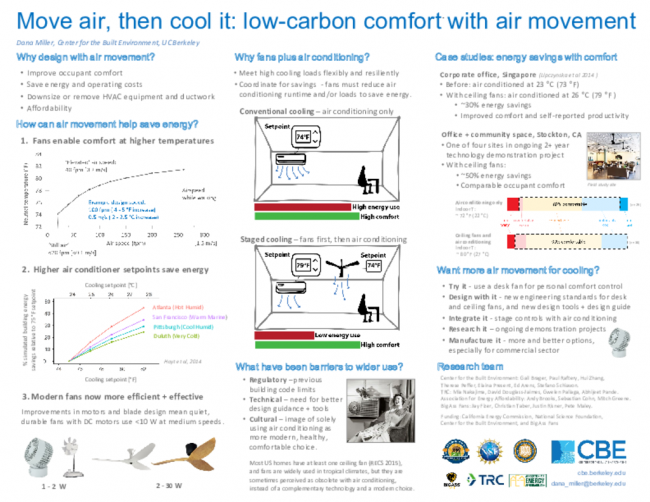Buildings account for 38% of greenhouse gas emissions from fossil fuel combustion, and heating, cooling, and ventilating buildings alone contributes 13% of national CO2 emissions. Globally, demand for cooling has doubled since 2000, and is projected to triple again by 2050 without ambitious changes in design and practice. One major strategy for reducing cooling energy use while maintaining comfort is using more air movement.
Modern desk, standing, or ceiling fans with efficient DC motors now use less energy than an LED light bulb to provide several degrees of cooling with gentle air movement – airspeeds lower than you experience while walking. In buildings without air conditioning, efficient fans can improve comfort or eliminate the need for mechanical cooling. In buildings with air conditioning, fans can still improve comfort, and also allow raising air conditioning setpoints so mechanical cooling runs less often and uses less energy. Numerous low energy and net-zero-energy buildings operating today already use fans this way.
We’ve collectively worked on numerous previous and ongoing research studies in this area over more than two decades, ranging from laboratory studies to technology demonstration projects, industry case studies, codes and standards development, and a forthcoming guide for engineers and architects on incorporating air movement in design. Our submission will engagingly summarize how advances in technology, building codes, modelling, and design, plus existing affordable mass-market products, demonstrate air movement’s potential to be integrated into building design and operation at a much larger scale to provide personalized comfort and low-carbon cooling.
Day
Monday Poster Session
Related Conference Themes
Built Environment


